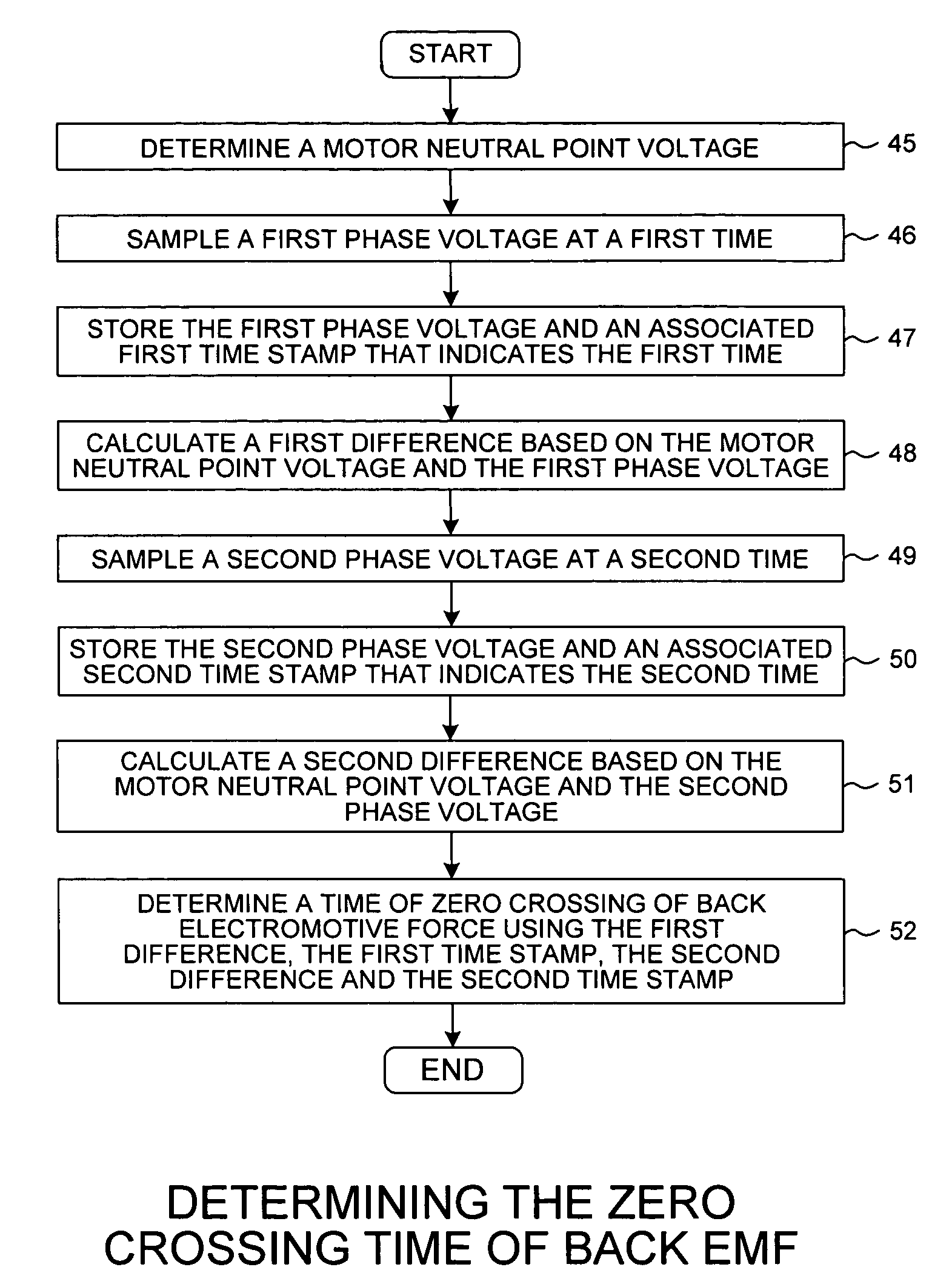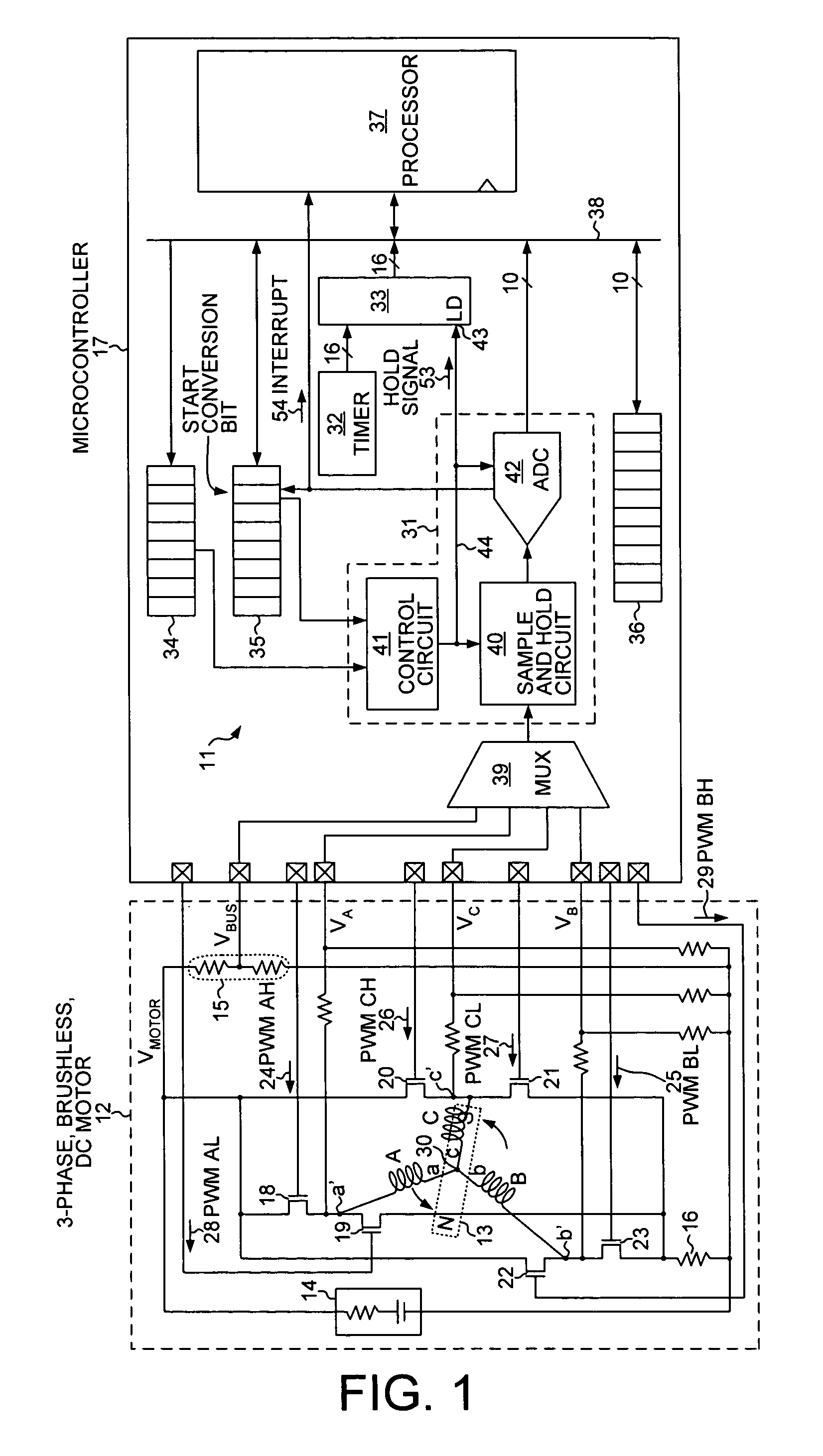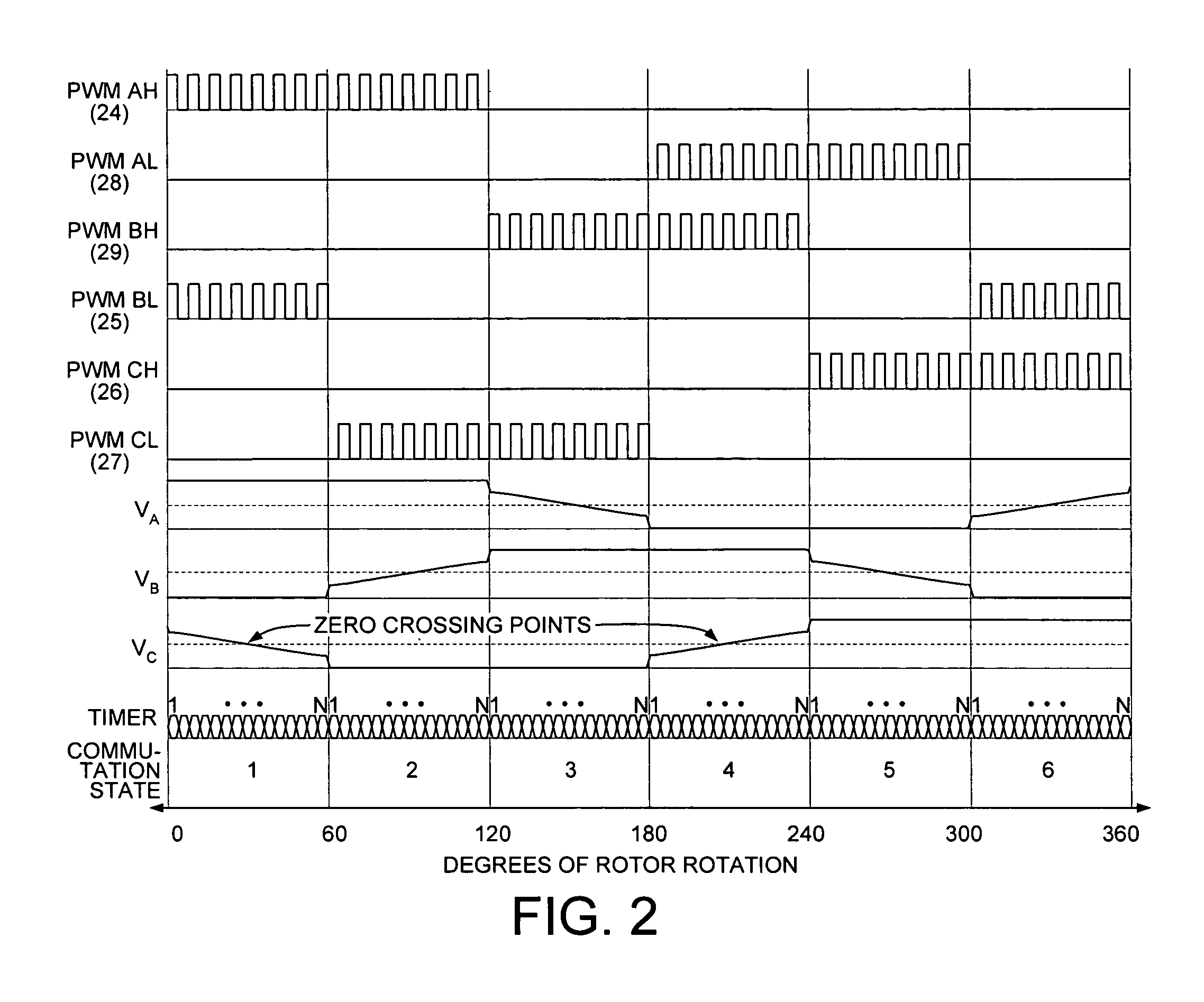Sample and hold time stamp for sensing zero crossing of back electromotive force in 3-phase brushless DC motors
a dc motor and electromotive force technology, applied in the direction of electronic commutators, synchronous motor starters, multiple motor speed/torque control, etc., can solve the problems of processing being interrupted during each commutation, consuming a lot of die space, and using such a dsp
- Summary
- Abstract
- Description
- Claims
- Application Information
AI Technical Summary
Benefits of technology
Problems solved by technology
Method used
Image
Examples
Embodiment Construction
[0021]Reference will now be made in detail to some embodiments of the invention, examples of which are illustrated in the accompanying drawings.
[0022]FIG. 1 shows a motor control system 11 for determining the position of the rotor of a brushless DC motor relative to the stator of the motor. In one embodiment, the motor is a 3-phase, permanent-magnet brushless DC motor 12 that is powered by direct current. Motor 12 has a rotor 13 with two poles and a stator with three phase windings A, B and C. The phase windings are sometimes called induction coils. The three phase windings are separated from one another by 120 degrees. In this embodiment, motor 12 is powered by direct current from battery 14 that is supplied at a voltage (VMOTOR). A voltage divider 15 is used to provide a divided DC supply voltage (VBUS) that approximates the voltage present on a node between the phase windings. A pull-down resistor 16 is used as a current sense resistor to determine the current flowing through thr...
PUM
 Login to View More
Login to View More Abstract
Description
Claims
Application Information
 Login to View More
Login to View More - R&D
- Intellectual Property
- Life Sciences
- Materials
- Tech Scout
- Unparalleled Data Quality
- Higher Quality Content
- 60% Fewer Hallucinations
Browse by: Latest US Patents, China's latest patents, Technical Efficacy Thesaurus, Application Domain, Technology Topic, Popular Technical Reports.
© 2025 PatSnap. All rights reserved.Legal|Privacy policy|Modern Slavery Act Transparency Statement|Sitemap|About US| Contact US: help@patsnap.com



